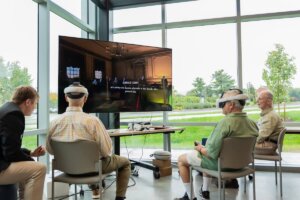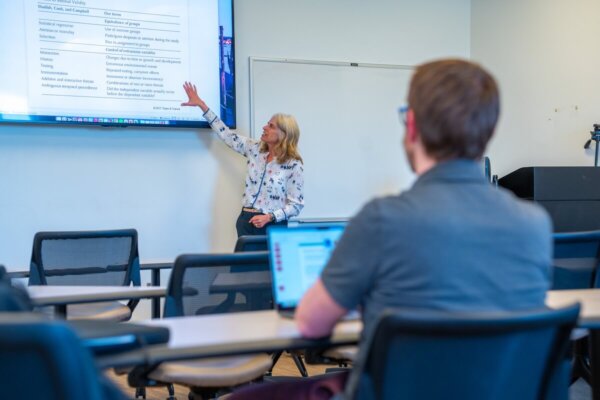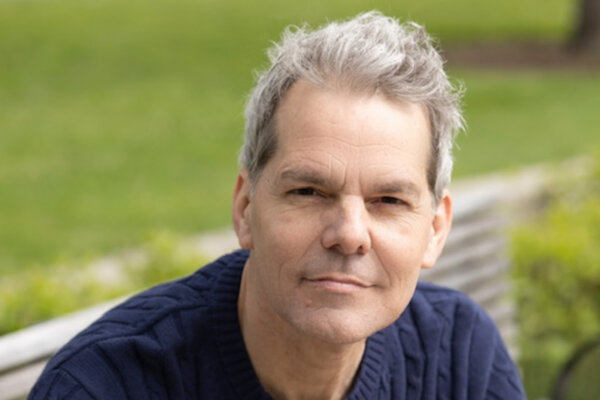Shenandoah University Releases ‘The Great Experiment’
Educational VR experience immerses users in 1787 debates that led to the creation of the Electoral College

A Shenandoah University-produced immersive history virtual reality experience that places users at the center of a defining moment in U.S. political history is now available to the public.
 “The Great Experiment: Redebating the Electoral College in Virtual Reality” immerses users in an authentic, virtual representation of the Assembly Room of the Pennsylvania State House (now known as Independence Hall) in Philadelphia during the debates that led to the creation of the Electoral College at the Constitutional Convention of 1787. The project was produced by the Shenandoah Center for Immersive Learning (SCiL) in collaboration with Shenandoah University’s history and virtual reality design departments and faculty from James Madison University.
“The Great Experiment: Redebating the Electoral College in Virtual Reality” immerses users in an authentic, virtual representation of the Assembly Room of the Pennsylvania State House (now known as Independence Hall) in Philadelphia during the debates that led to the creation of the Electoral College at the Constitutional Convention of 1787. The project was produced by the Shenandoah Center for Immersive Learning (SCiL) in collaboration with Shenandoah University’s history and virtual reality design departments and faculty from James Madison University.
Shenandoah celebrated the launch of the project during a special event on Friday, Sept. 27, in the university’s new Hub for Innovators, Veterans and Entrepreneurs (HIVE), which featured demonstrations of “The Great Experiment” and a special toast commemorating its release.
“The Great Experiment,” an educational VR experience that could shape the way that immersive technology is implemented in scholarship, is being published in association with the University of Virginia Press. It’s among the first virtual reality programs to receive this distinguished mark of academic credibility, which included rigorous peer review and approval by the University of Virginia Press’ editorial board.
As citizens of democracy, we must be reminded of the roots and reasoning of how we constituted our forms of government, and this cutting-edge project provides the user a seat in the middle of the action. As a student many, many decades ago, I was taught to memorize the opening paragraph of the U.S. Constitution. I suspect many of my generation learned the same way. The words were inspirational – are inspirational – and I’m proud to say I’ve never forgotten them. Shenandoah’s virtual reality program, ‘The Great Experiment,’ will inspire a new generation.”
Eric Brandt, Ph.D., director of the University of Virginia Press
Through a series of five increasingly immersive and interactive participatory stages featuring avatars of the country’s founders, “The Great Experiment” engages users in the 18th-century debates about how to elect the President of the United States. In the first stage, users watch as delegates engage in the debates that ultimately led to the formation of the Electoral College. Participants then learn about the principles, positions and life experiences of individual delegates before assuming the role of a delegate and participating in the debates according to the program’s script.
The fourth stage allows users to engage in the debate using their own words, and the final level opens the door for participants to engage in a free debate on a related question of contemporary significance. A multiplayer component allows multiple participants to interact with each other in the same virtual space.
We hope to get ‘The Great Experiment’ into our schools, into our government and civics classes. We hope that ‘The Great Experiment’ becomes a medium for scholarship, so that it’s applied in university classes and seminars. We hope that historians and scholars in other fields will adopt immersive technology and some of the ideas and concepts we’ve developed in ‘The Great Experiment’ as a means of creating and communicating new knowledge. We hope that ‘The Great Experiment’ can contribute to our public life and civic culture, to the discussions of issues that challenge us as a people, that divide us and unite us. We’ve established virtual spaces that can be safe spaces where we can assume new or historic identities and learn to speak on contemporary issues with their original viewpoints in mind. Think what we can contribute to the tone and quality of public discourse.”
Shenandoah Professor of History Warren Hofstra, Ph.D., one of four individuals leading the project’s development
 Production of “The Great Experiment” began in 2019, and involved nearly 100 Shenandoah students as well as SU faculty and staff, historians, computer scientists, virtual reality and audio engineers, and media directors and producers, with additional support from historians at James Madison University, exhibition developers at the National Constitution Center, curators at the National Park Service’s Independence National Historical Park, and editors from the University of Virginia Press.
Production of “The Great Experiment” began in 2019, and involved nearly 100 Shenandoah students as well as SU faculty and staff, historians, computer scientists, virtual reality and audio engineers, and media directors and producers, with additional support from historians at James Madison University, exhibition developers at the National Constitution Center, curators at the National Park Service’s Independence National Historical Park, and editors from the University of Virginia Press.
To ensure authenticity and historical accuracy, a three-dimensional digital twin of the Assembly Room was constructed from architectural drawings and photographs from the Historic American Building Survey (HABS), combined with site visits and collaboration with the Independence National Historical Park.
Additionally, 3D scans of highly authentic statues of the founders, used with permission of the National Constitution Center, informed the creation of the avatars, and extensive research into the writings of historical figures and the records of the Constitutional Convention guided the curation of accurate dialogue. Voice actors were used to record the dialogue for the delegates, and a motion-capture studio was constructed to allow professionally trained performers to bring those avatars to life.
What distinguishes virtual reality from other forms of narrative media is its extraordinary capacity to present to the person inside the experience a visceral quality of reality. … This quality of immersion is the source of VR narrative power, and to my mind, the thing that makes it distinct and that we have to figure out how to use to best advantage, and also perhaps what are some of the dangers involved in it. While VR has been around for a surprisingly long time, the broader project of narrating history in this medium is very much in its infancy. We are proud that our work has been peer reviewed and will be published in association with the University of Virginia Press.”
James Madison University Professor of History Kevin Hardwick, Ph.D.
The title of the program is derived from a quote by George Washington, who wrote: “The establishment of our new Government seemed to be the last great experiment, for promoting human happiness.”
“The Great Experiment,” including a free “lite” version of the app, is available for download at su.edu/tge. The app is compatible with Meta VR devices and will soon be available on all mainstream platforms, including Apple Vision Pro.
Mohammad Obeid, Ph.D., director of Shenandoah University’s Bachelor of Science in virtual reality design program and co-director of SCiL, and J.J. Ruscella, executive vice president and chief immersive officer of AccessVR and founding director of SCiL, joined Dr. Hofstra and Dr. Hardwick in leading the project’s development.





